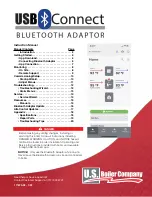
202 Managing administrative domains
Creating a new user account for managing Admin Domains
1.
Connect to the switch and log in as admin.
2.
Enter the
userConfig
--
add
command using the
-r
option to set the role, the
-a
option to provide
access to Admin Domains, and the
-h
option to specify the home Admin Domain.
userconfig --add
username
-r
role
-h
home_AD
-a "
AD_list
"
where
username
is the name of the account,
role
is the user account role,
home_AD
is the home Admin
Domain, and
AD_list
is the list of Admin Domains to which the user account will have access.
The following example creates new user account ad1admin with an admin role and assigns one Admin
Domain, blue_ad1, to it. This example also assigns blue_ad1 as the user’s home Admin Domain.
switch:admin>
userconfig --add ad1admin -r admin -h blue_ad1 -a
"blue_ad1"
The following example creates new user account ad2admin with an admin role, access to Admin
Domains 1 and 2, and home Admin Domain set to 2.
switch:admin>
userconfig --add ad2admin -r admin -h 2 -a "1,2"
Assigning Admin Domains to an existing user account
1.
Connect to the switch and log in as admin.
2.
Enter the
userConfig
--
addad
command using the
-a
option to provide access to Admin Domains
and the
-
h
option to specify the home Admin Domain.
userconfig --addad
username
-h
home_AD
-a "
AD_list
"
where
username
is the name of the account,
home_AD
is the home Admin Domain, and
AD_list
is the
list of Admin Domains to which the user account will have access.
The following example assigns Admin Domain green_ad2 to the existing user account ad1admin.
switch:admin>
userconfig --addad ad1admin -a "green_ad2"
Creating a new physical fabric administrator user account
1.
Connect to the switch and log in as admin.
2.
Enter the
userConfig
--
add
command using the
-r
option to set the role to admin and the
-a
option to provide access to Admin Domains 0 through 255.
userconfig --add
username
-r admin -h
home_AD
-a "0-255"
where
username
is the name of the account and
home_AD
is the home Admin Domain.
The following example creates new user account pf_admin1 with an admin role, access to all Admin
Domains (AD0 through AD255), and home Admin Domain set to 255. This user account is now a
physical fabric administrator.
switch:admin>
userconfig --add pf_admin1 -r admin -h 255 -a "0-255"
Removing an Admin Domain from a user account
When you remove an Admin Domain from an account, all of the currently active sessions for that account
are logged out.
1.
Connect to the switch and log in using an account assigned to the admin role.
2.
Enter the following command:
userconfig --deletead
username
[-h
admindomain_ID
] [-a
admindomain_ID_list
]
where
username
is the account from which the Admin Domain is being removed (the account must
already exist),
admindomain_ID
is the home Admin Domain, and
admindomain_ID_list
is the Admin
Domain list to be removed from the existing list. If the
–h
argument is not specified, the home Admin
Domain either remains as it was or becomes the lowest Admin Domain ID in the remaining list.
Summary of Contents for A7533A - Brocade 4Gb SAN Switch Base
Page 1: ...HP StorageWorks Fabric OS 6 2 administrator guide Part number 5697 0016 Edition May 2009 ...
Page 24: ...24 ...
Page 99: ...Fabric OS 6 2 administrator guide 99 ...
Page 100: ...100 Managing user accounts ...
Page 118: ...116 Configuring standard security features ...
Page 164: ...162 Configuring advanced security features ...
Page 234: ...232 Installing and maintaining firmware ...
Page 268: ...266 Administering advanced zoning ...
Page 284: ...282 Configuring Enterprise class platforms ...
Page 292: ...290 Routing traffic ...
Page 294: ...292 Interoperability for merged SANs ...
Page 302: ...300 Configuring the Distributed Management Server ...
Page 334: ...332 iSCSI gateway service ...
Page 340: ...338 Administering NPIV ...
Page 407: ...Fabric OS 6 2 administrator guide 405 ...
Page 408: ...406 Using the FC FC routing service ...
Page 438: ...434 Administering extended fabrics ...
Page 460: ...456 Administering ISL trunking ...
Page 516: ...512 FICON fabrics ...
Page 526: ...522 Configuring and monitoring FICON Extension Services ...
Page 540: ...536 Configuring the PID format ...
Page 544: ...540 Understanding legacy password behavior ...
Page 546: ...542 Mixed fabric configurations for non merge SANs ...
Page 550: ...546 Migrating from an MP Router to a 400 MP Router ...
Page 558: ...554 Inband Management ...
Page 572: ...568 ...
















































